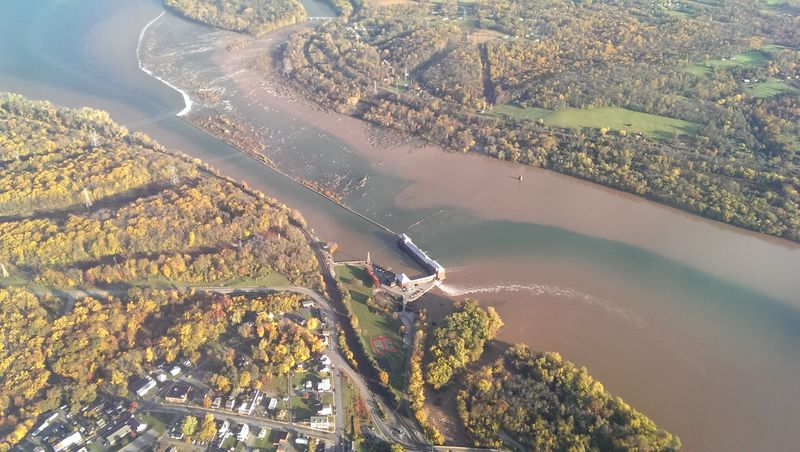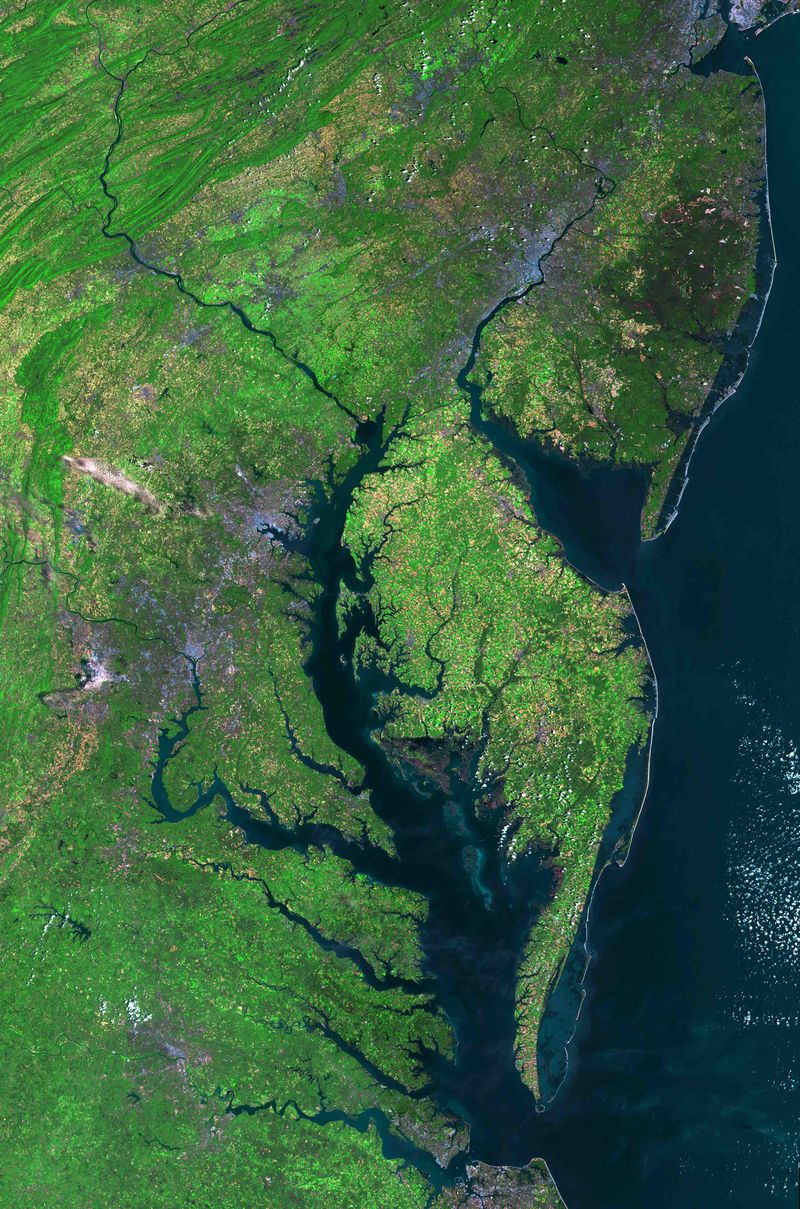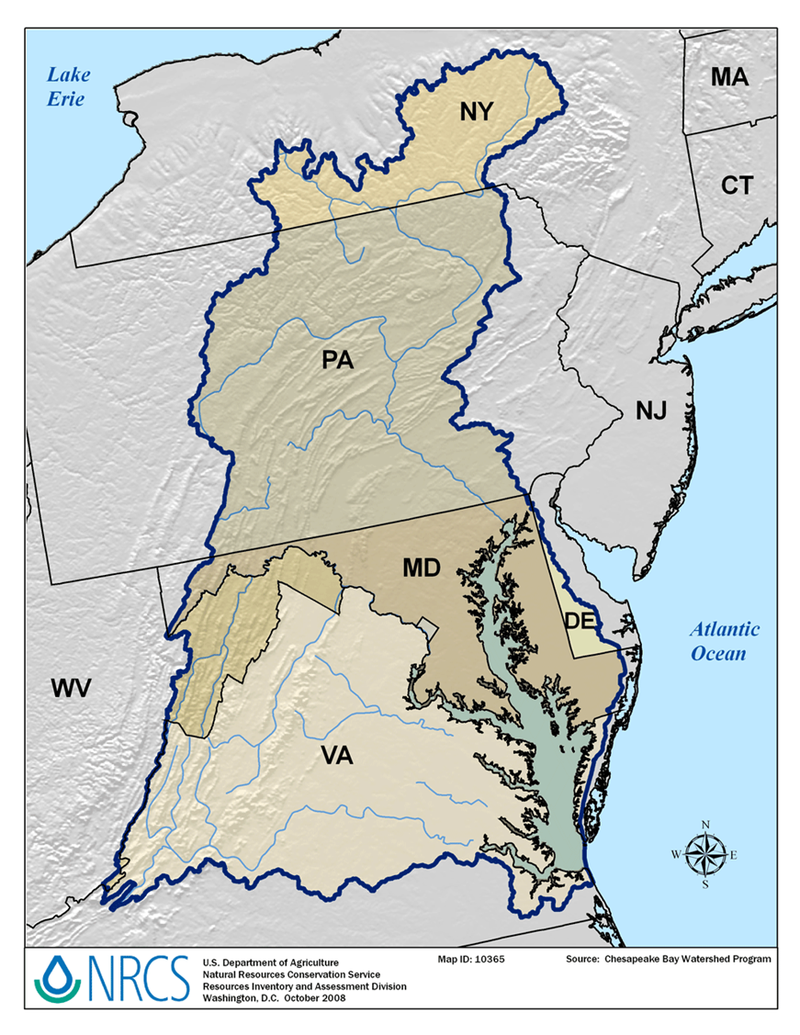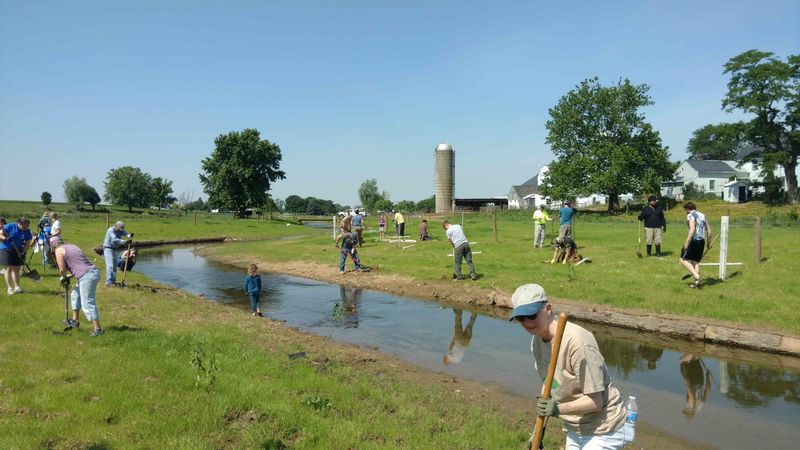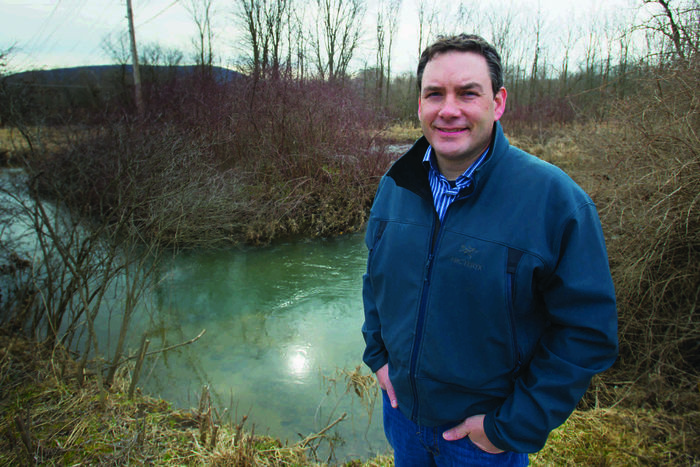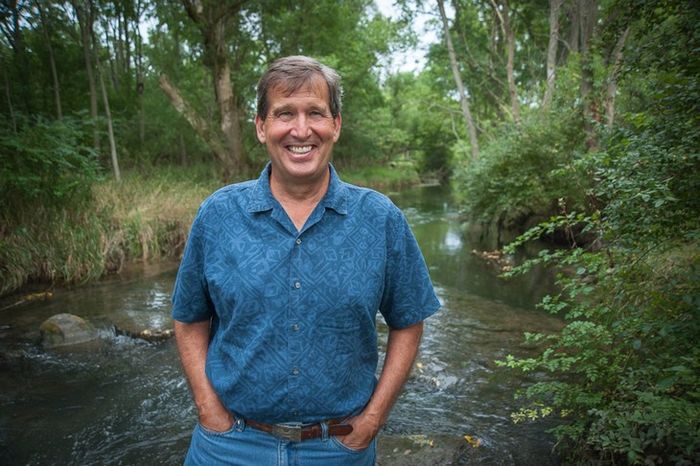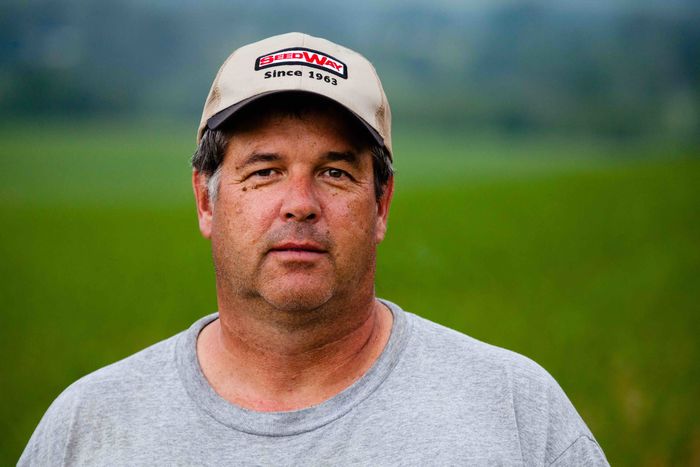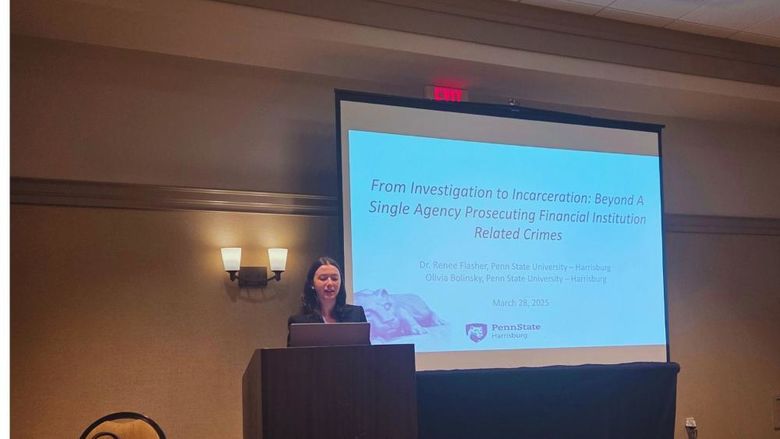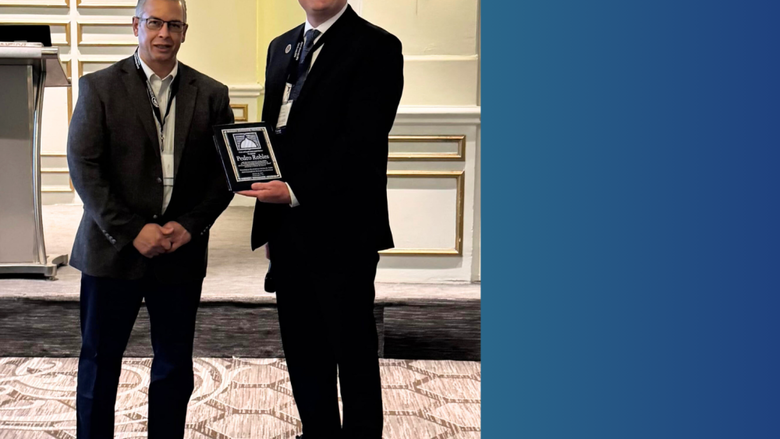When Matt Royer teaches undergraduates about nutrient pollution, he calls it a next-generation environmental problem.
“I start with a history of the environmental movement,” says Royer, director of Penn State’s Agriculture and Environment Center. “Most of our current law was born out of those televised images from the 1960s, images of rivers catching on fire, smog inversions, oil spills on California beaches. Things that are easy to see, that have drastic, immediate impacts.”
Nutrient pollution is not like that. Its impacts mount gradually, and they can be difficult to spot. But it’s a major issue affecting water quality around the world: The U.S. Environmental Protection Agency names it “one of America's most widespread, costly and challenging environmental problems.”
A wicked problem, academics have called it. Its sources are diffuse, and hard to regulate. The science is complex. And the politics are multi-layered and thorny, involving a wide range of stakeholders and competing interests.
Royer, an environmental lawyer who grew up on his family’s poultry farm in Lancaster County, likes to say that we all contribute to nutrient pollution. We all use the bathroom, and rely on wastewater treatment, and eat farm-raised foods, and depend on the roads and paved surfaces that convey storm water into our streams. But in an agricultural state like Pennsylvania, the largest single source of nutrient pollution is the runoff of nitrogen and phosphorus from fertilizers applied to farm fields: nutrients that are vital for plant growth, but that in excess create blooms of algae that eat up oxygen and choke aquatic life.
These nutrients seep into groundwater and creeks, fouling drinking water and killing fish. The sediments that carry them coat stream beds, smothering habitat for insects and other creatures at the low end of the food chain. The pollution flows on into larger tributaries, proceeding downstream to join the Susquehanna River. Eventually, much of what washes from Pennsylvania’s fields winds up in the Chesapeake Bay.
Land to Water
With some 64,000 square miles of land draining into a shallow, narrow body of water just 200 miles long, the Chesapeake is in some respects a worst-case scenario. “The land-to-water ratio dwarfs that of almost every other water body in the world,” Royer says.
The Bay watershed, home to 18 million people, spreads out across six states and the District of Columbia. It includes almost two-thirds of Pennsylvania, which supplies fully half of the Bay’s freshwater flow and the largest share of its agricultural pollution.
Soil scientists and environmental engineers, wetlands ecologists, extension agents and others, including many at Penn State, have been working on this problem since the 1980s. One outcome of their efforts has been the establishment of a set of best practices for farmers: steps aimed at limiting fertilizer use, maintaining soil health, and managing the storage of manure. “The idea was that if we put a lot of these best practices into place, we’d solve our environmental problem,” says James Shortle, distinguished professor of agricultural and environmental economics. But the results have been mixed at best.
Part of the problem is limited resources. Because most Pennsylvania farms—large confined animal operations are the exception—are not regulated under the federal Clean Water Act, the state has relied heavily on incentives to convince farmers to adopt conservation measures. “The spending for this has been enormous,” Shortle says, “and the reductions in pollution not that much.”
Further, while environmentally conscious farming practices are critical for reducing the flow of pollution into the Bay, there are bigger issues they don’t address, economist Shortle says. One example: As a state dominated by animal-intensive agriculture, Pennsylvania imports vast quantities of corn from the Midwest for feed. That corn carries nitrogen and phosphorus from Midwestern soils. “Our animals use only about 30 percent of these nutrients, and the rest goes into the environment,” he says. “Effectively, we’re taking nutrients from the Midwest, and putting them into the Bay.” A comprehensive solution, he argues, would include policies aimed at addressing this kind of imbalance.
In 2005, when he became director of the College of Agricultural Science’s newly formed Environment and Natural Resources Institute, Shortle made nutrient pollution his number one priority. To attack the problem effectively, he thought, would require a more coordinated approach, and he saw Penn State playing a critical role. “There’s no single entity in the state apart from our College that has the scientific capacity combined with the connections and the trust of the agricultural sector to facilitate this,” he says. At the time, however, the university had yet to assume such a role. “We were aware of the problem, we had certainly made noteworthy contributions to the science of the Bay, we had done some extension work, but on the whole Penn State was a non-player.”
With some 64,000 square miles of land draining into a shallow, narrow body of water just 200 miles long, the Chesapeake is in some respects a worst-case scenario.
The immediate challenge, he knew, would be political. “Many people had been working on this problem for a long time, and there were a lot of silos built up around the Bay,” Shortle says. “We had to find a way to get engaged.” After consulting with colleagues, he decided to stage a conference, in Harrisburg. “But it wasn’t going to be us lecturing everybody,” he says. Instead, the College would invite a representative mix of the Bay’s many and various stakeholders—elected officials, farmers, representatives from local, state, and federal agencies, conservation officers, environmental activists, and lobbyists—to come together in working groups, share ideas and concerns, and try to hash out solutions. The focus would be on collaboration.
It wasn’t an easy sell. “We were bringing together groups that had never talked to each other, or if they did they were yelling at each other,” Shortle says. “I remember some of them calling me and asking what the heck we were doing.” In the end, however, that 2008 conference, “Agriculture in Balance,” was a major step forward. “There was a recognition that our multiple interests—in a vibrant farm economy, beautiful rural landscapes, and water quality—could in fact co-exist. We came out of it with a shared vision for Pennsylvania agriculture.”
With the subsequent creation of the Agriculture and Environment Center, the College established a platform for its ongoing efforts. The general premise, echoing research by Penn State geographer Denice Wardrop and others, was that addressing water quality problems in the Bay would require cleaning up the waterways that feed into it. To that end, the center would integrate research and extension, and put most of its emphasis on building community partnerships.
“We in Pennsylvania don’t tend to connect with the Bay that much—we don’t live on it, or recreate on it, most of us,” Royer explains. “But we do care about our local streams. Our job at the center is to build capacity to address things at a local watershed level.”
He’s the right man to do it. In 2001, Royer and his father took it upon themselves to clean up their own home watershed, south of Hershey. Noticing the diminished health of their local creek, the two discussed what they could do about it. The younger Royer posted signs to advertise a community meeting, and a grassroots watershed restoration effort was born.
Adopted by Penn State, the Conewago Creek Initiative eventually brought together over 30 public and private organizations, from the state Department of Environmental Protection to Trout Unlimited chapters to local high schools. With funding from the National Fish and Wildlife Foundation, teams of volunteers worked with residents and landowners to raise awareness about water quality issues and promote tried-and-true best practices, like streamside buffers and cover cropping, as well as innovations coming out of the latest Penn State research, like manure injection and low-protein feeds. In the end, the effort succeeded in substantially improving the local water quality in one of the more heavily agricultural watersheds in the state. Conewago Creek has since been designated a Chesapeake Bay “Showcase Watershed” by the U.S. Department of Agriculture, and Royer and his team have adapted the model for use in other local watersheds.
A Pollution Diet
In 2011, prompted by continued poor water quality in the Bay and its tributaries, the U.S. EPA established the Chesapeake Bay Total Maximum Daily Load. This comprehensive “pollution diet” mandates steep reductions in nutrient pollution to be accomplished by every state in the Bay watershed by 2025. For the first time, states are to be held accountable for nutrient pollution under federal law. For Pennsylvania, especially, that deadline presents an enormous challenge.
The sheer number of farms in Pennsylvania is one thing, Shortle says: The state has over 34,000 within the Bay watershed. Lancaster County alone has over 5,000, more than the entire state of Maryland. “In Pennsylvania, too, we have a lot of small farms,” he adds, “and it’s harder for them to comply. Reducing agricultural pollution is something that has economies of scale.”
To meet the EPA mandate, he and Royer stress, will require a strategic approach. “We need to put the most cost-effective solutions in the places where we have the biggest problem,” Shortle says. That means, for example, focusing incentive programs on our most agriculture-intensive counties—Lancaster and York—instead of making their application uniform across the state. But pollution “hot spots,” Royer says, can also be pinpointed within local watersheds, and even within individual farms. “Depending on the soil type, the topography, the type of agricultural operation, and many other factors, what’s needed varies to the point that it becomes almost site-specific.” To provide the scientific underpinning for this kind of precision conservation, Shortle and Rob Brooks, professor of geography and ecology, started the Center for Nutrient Solutions, one of four EPA-funded national centers for water research, in 2014.
Adopted by Penn State, the Conewago Creek Initiative eventually brought together over 30 public and private organizations, from the state Department of Environmental Protection to Trout Unlimited chapters to local high schools.
The center encompasses water research from around the university, and includes partners at USDA and the University of Maryland. Shortle and colleagues are addressing system-level questions: the regional imbalances caused by importation of nutrients, and the deposition of nitrogen and phosphorus through air pollution. In addition, they are monitoring nutrient flow in four pilot watersheds – three in southeastern Pennsylvania, and one in Maryland--and working with the USDA’s Agricultural Research Service office, on the University Park campus, to model pollution entering the Bay. “We can use these models to explore different scenarios,” Shortle says. “We can see which practices, in which places, give us the levels of reduction we’re looking for.”
In the spirit of partnership, the research is collaborative, involving community members whose insights are critical for understanding local constraints and finding solutions that have a better chance of being implemented. One example is a project recently funded by the USDA to take a fresh look at riparian buffers, shaded zones of vegetation bordering farm streams that can be highly effective in reducing erosion and nutrient loss. Buffers can be expensive for farmers to install and maintain, and for this reason their adoption has faced some resistance. To address this, the new study, led by assistant professor of agricultural engineering Heather Gall, will begin with focus groups. Then Gall’s team will evaluate a variety of flexible buffer designs, looking for alternatives that are both effective and affordable.
“It’s always a give and take between what farmers might be interested in trying and what they can fit into their existing operations,” Royer says. “We’re trying to find that sweet spot, where you’re maximizing conservation and production at the same time.”
PA in the Balance
By early 2016, Shortle and Royer knew the time was right for another summit. Approaching the midpoint to the EPA’s deadline, it had become clear that if Pennsylvania was going to have any chance of making the 2025 target, the state would have to sharply accelerate its pollution-reduction efforts. The name they chose for this follow-up conference, “Pennsylvania in the Balance,” reflected their sense of urgency. The entire range of Bay stakeholders was once again invited, this time to Hershey. The object, again, was to sit down together and find a way forward. But the lead role this time would fall to those on the front lines: the farmers themselves.
Shortle and others were concerned that a strategy of pushing farmers to comply with ramped-up regulations was likely to be counterproductive. It would be better, they thought, to let farmers take the lead—identifying obstacles, proposing solutions they found workable, and embracing best practices because they wanted to, not because they were being forced to do so.
Conference attendees agreed that farmers who are leaders in their communities can play an outsized role in spreading acceptance of environmentally friendly practices.
“We wanted to tap into the stewardship ethic that farmers share,” Royer says. That ethic showed in the results of a survey the College conducted, drawing responses from nearly 7,000 Pennsylvania farmers. Funded by the state’s Department of Environmental Protection and Penn State, the first-of-its-kind survey sought to learn what farmers were doing on their own initiative to improve water quality on their farms. As Royer explains, the DEP tracks conservation practices implemented to reduce pollution, and reports those efforts to the EPA to document progress. But practices that farmers pay for themselves, without government grants, don’t get counted. “The survey results confirmed what we suspected—that a lot is being done already,” he says. “It’s important that farmers get credit for that.”
Conference attendees agreed that farmers who are leaders in their communities can play an outsized role in spreading acceptance of environmentally friendly practices. One such leader, Jim Harbach, sat on the panel that kicked off the meeting. Harbach and his family run Schrack Farms Resources, a 1,000-cow dairy operation in Loganton, Clinton County, that won the 2018 Innovative Dairy Farmer Award of the International Dairy Foods Association. He is also co-director of the Pennsylvania No-Till Alliance, a “farmer-to-farmer” organization that promotes the benefits of no-till farming and cover-cropping, practices that can dramatically improve soil structure, reduce erosion, and prevent nutrient runoff. Harbach is passionate about spreading the gospel of good soil health.
“We got into no-till for all the wrong reasons,” he says. “We were tired of picking rocks out of our fields. Then we saw what it was starting to do to the soil, and we realized we had an obligation to share our observations.” Indeed, peer-to-peer education is vital in farming communities, where traditional ways can be hard to let go of, and change means risk. But meeting higher conservation standards also requires that farmers master a new type of expertise. Many simply don’t have the technical know-how—or the time—to draw up and carry out the detailed conservation and nutrient management plans that are now mandated by the state, Harbach says, and a lack of qualified planners for them to call on exacerbates the problem. To address this shortage, the College developed a certificate program for training undergraduates as conservation technicians.
Moving Forward
By all accounts, “Pennsylvania in the Balance” was a resounding success. “One of the really exciting things that came out of it,” Royer says, “was the realization that farmers are eager to take the lead in solving this problem.”
Kelly Shenk, the EPA’s agricultural advisor for the Chesapeake Bay region, agrees. “It was the first time the agriculture community came together with a unified voice and said, ‘Listen, we can figure this out,’” she says. “And it couldn’t have happened without Penn State.”
From Harbach’s perspective, “It was a chance to sit down with high-ranking officials, with the EPA, and nobody was pointing any fingers. Everybody was working on finding solutions. That’s created some good partnerships moving forward.”
“It was the first time the agriculture community came together with a unified voice and said, ‘Listen, we can figure this out.' And it couldn’t have happened without Penn State.”
Progress is being made. Most of the indicators for nutrient pollution into the Bay seem to be turning slowly in the right direction, Royer says. But there’s still a long way to go. He and Harbach are both involved in writing the agriculture component of the DEP’s implementation plan, the document that will guide the final push to the 2025 EPA deadline. Both say the lessons of “Pennsylvania in the Balance” will be an important component.
“I think the conference has helped position Pennsylvania differently with regard to water quality issues,” says Mary Seaton, assistant director of College Relations. “Instead of being the state that’s a problem, we’re viewed as a state that’s working on some great new ideas. We’ve become a model for others, as far as getting people to work together constructively.”
Seaton’s comment might as well refer to the College’s entire decade-long effort, assuming the leadership role that Shortle envisioned back in 2005. “It’s been remarkable,” Shortle says. “We have really elevated what we do. This has been a model engagement of our capacities in addressing a complex problem.”
“It’s a great example of what Penn State can provide, as a land grant institution,” Royer adds.
“We can be a big part of the solution.”
This story first appeared in the Spring 2018 issue of Research/Penn State magazine.
